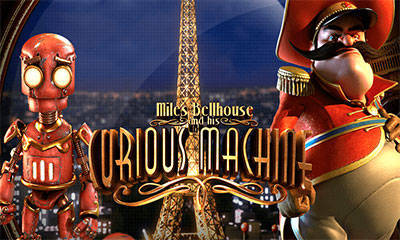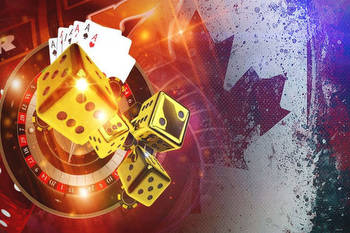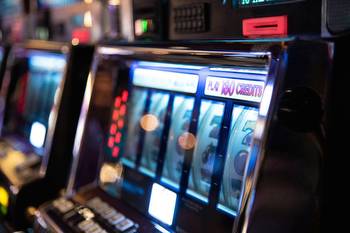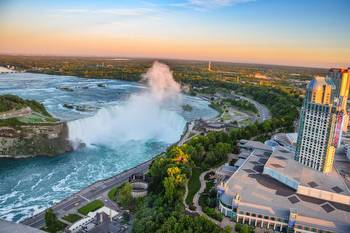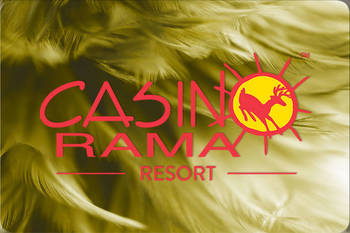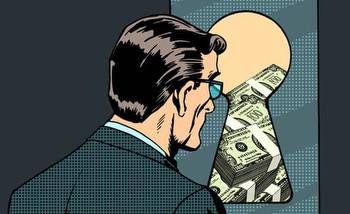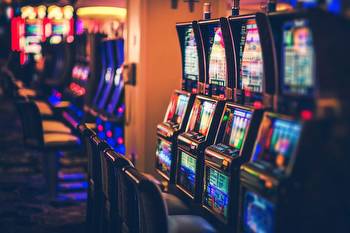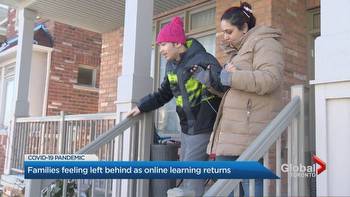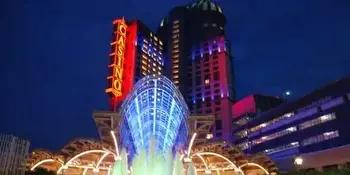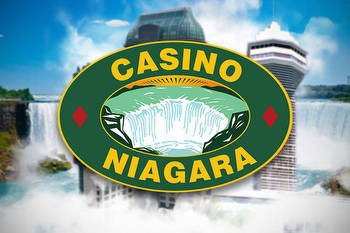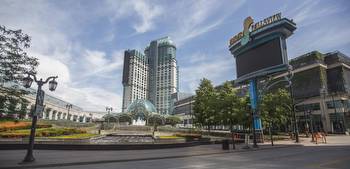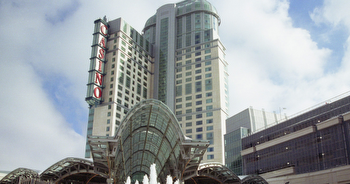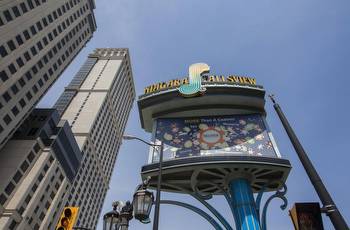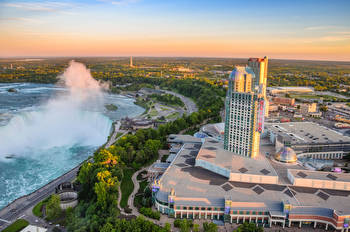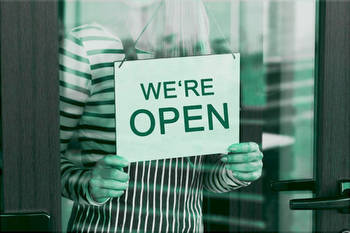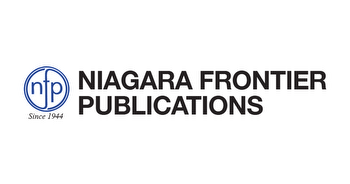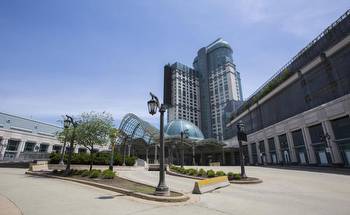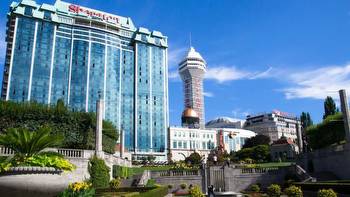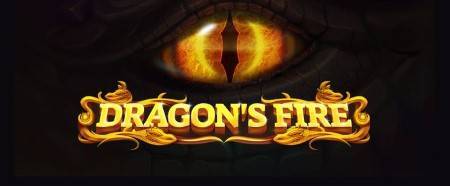The survivor: Casino Niagara beats the odds to mark 25 years of gambling
It was the casino born with an asterisk beside its name.
Casino Niagara opened with a splash 25 years ago, on Dec. 9, 1996, maybe the biggest thing to hit Niagara since water started falling.
But to locals, it was the ‘interim’ casino — a multimillion-dollar, noisy, blazing neon placeholder that would suffice until it was replaced by something bigger, noisier, flashier.
Casino Niagara was expected to close in 2004. It didn’t.
Then it was officially recommended to be closed in 2012. It wasn’t.
Now it’s not the interim one, it’s a survivor.
Casino Niagara settled into a more comfortable role as the ‘other’ one, alongside its bigger, billion-dollar cross-town cousin, Niagara Fallsview Casino Resort.
Together, they employ about 3,500 people, including 728 who have worked there for all 25 years.
“It’s here to stay. It’s part of our business, and an important part of our business,” said Niagara Casinos president Richard Taylor, in an interview.
“And we cover off the two different tourist nodes here. We have the Fallsview tourist node, and the one here at Clifton Hill.”
Vice-president human resources Colleen Falco added: “The brands are different. Casino Niagara has always been the fun, more local crowd. And Fallsview has been sort of that remarkable experience.
“The ambience here is just a little bit different.”
Raised from the massively renovated shell of the former Maple Leaf Village, Casino Niagara was Ontario’s second gaming hall, after Casino Windsor.
After it opened, it was so busy at times that the Niagara Falls fire department was called to make sure capacity limits weren’t being exceeded.
The impact has been massive. Taylor estimated the casinos together paid out $4.5 billion in payroll and benefits since 1996. In that time, the casinos generated $168 million in payments to the City of Niagara Falls, as a host community.
They purchase goods and services from about 275 businesses, mostly local, which creates spinoff jobs. And the casinos and their employees support 161 local charities and not-for-profits.
Taylor confirmed the original plan was to close Casino Niagara after the 2004 opening of the Fallsview with its hotel, spa, shopping concourse and 1,500-seat concert hall.
But in 2003 then-Ontario premier Ernie Eves — facing an election later that year (he would lose to Dalton McGuinty’s Liberals) and the pending opening of a casino in Buffalo — announced Casino Niagara would stay open, and Niagara Falls would have two casinos.
“We were working on that steady, right from Day 1” to keep both casinos open, said Wayne Thomson, now a city councillor but mayor of Niagara Falls at the time.
Thomson was the leader of the effort, with local business heavyweights including Dino DiCienzo, Tony Zappitelli, George Yerich and then-MPP Bart Maves, to make Niagara Falls a year-round destination.
At that time, Niagara’s tourism industry mostly hibernated over the winter. Marineland shut down and Clifton Hill, the self-titled Street of Fun, was a lonely place on cold days.
When Casino Niagara opened, and later when a location was picked for the massive Fallsview casino, “everything exploded after that,” Thomson recalled in an interview.
“I used to joke about Fallsview, there were no highrise hotels in that area before that … but when the casinos went in, I said I think we should change our name to Crane City,” he said.
“It was all cranes going all over, building highrises … the jobs and tourism that resulted because of the casinos was unbelievable.”
Janice Thomson, current president of Niagara Falls Tourism, agreed it brought in “a whole new era of tourism.”
In an interview, she said starting with Casino Niagara “it gave the private investors confidence to invest more in the city ... in quality attractions and quality accommodations and restaurants that benefited the whole spectrum of visitors.”
But as casinos proliferated across Ontario, by 2012 a study commissioned by the provincial government recommended some be closed.
Specifically, it noted one of the Niagara Falls casinos should be shut down. And the author, economist Don Drummond, didn’t need to say the words ‘Casino Niagara’ to know which one that would be.
The slots at Fort Erie Race Track were closed, but Casino Niagara survived.
In 2019, Ontario Lottery and Gaming awarded Connecticut-based Mohegan Gaming and Entertainment a 21-year contract, expiring in 2040, to operate the two Niagara Falls casinos as a bundle.
Neither OLG nor Mohegan will say how much revenue the two casinos generate, or what the split is between the two sites, citing a competitive industry.
There are 28 casinos across Ontario operated by various companies, and according to OLG’s annual reports they generated a combined $3.87 billion in gross revenue in 2019-20.
Only the lotteries were more profitable, bringing in close to $4.1 billion for the province.
Then came COVID-19 in March 2020, forcing Ontario’s casinos to close for 16 months before reopening this past July.
While lottery revenues rose to $4.2 billion in 2020-21, casinos’ income shrivelled, relatively speaking, to $116 million.
Taylor said since the two Niagara Falls casinos and the hotel reopened, “overall from a head count perspective, of people coming in we’re doing roughly about 30 per cent volume compared to before COVID … from a financial perspective, we’re doing slightly better than that.”
In a typical non-COVID year, Casino Niagara attracts about two million visitors and an estimated 100 million since it opened.
Taylor said “virtually all of our restaurants are open.”
“We’re still a little bit slow on poker here at CN (Casino Niagara), we want to get that up and running very soon.
“But we’ve been very mindful of our expanded operations and reopening our operations to make sure we keep pace with the business volumes.”
Falco said about 2,200 of the two casinos’ approximately 3,500 associates are back to work, with more returning every week.
“It’s very slow and gradual, we want to ensure we can sustain everybody’s hours. We don’t want to bring anybody back and then have reduced hours for anyone.”
In the end, COVID-19 rules. The pace of reopening, and health and safety measures taken in that time, depend on the state of the pandemic.
Niagara Falls is the only city in Ontario with two casinos. What makes it work, Taylor said, is “we don’t compete.”
“Our business model, we run this as one business and just happen to be separated by a little bit of greenspace in between us.
“But it’s the same employees, the same strategies, so we try to run it as one business.”
He said close to $50 million in capital improvements have been made at Casino Niagara since 2011.
The pandemic has broken people of a lot of their usual habits.
Everything from bowling leagues to work and shopping routines and travel plans have been disrupted, and they won’t all necessarily return to normal post-COVID.
Taylor believes casinos will rebound.
“People still want to have experiences with other people, and I think that will never change,” he said.
“And we’re in the experiential business and it’s what we do best. We’re in the customer service business and there’s nobody that does that better than we do.”
Casino Niagara notes
According to CanadianGaming.ca, in the four years before Casino Niagara opened the City of Niagara Falls issued about $50 million annually in building permits. Over the next 10 years, that increased to roughly $165 million per year on average;
In a 1994 referendum on the municipal election ballot, 65 per cent of Niagara Falls residents who cast ballots voted yes to allowing casino gaming;
According to Niagara Casinos, Casino Niagara and the Fallsview casino together are the largest commercial employer in Niagara, with about 3,500 associates;
Casino Niagara has approximately 1,400 slot machines and 30 gaming tables, plus restaurants and some retail.







